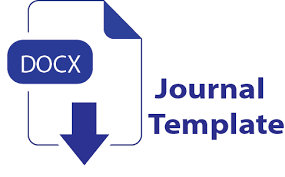Daur al-Lughah al-‘Arabiyyah fi Da’mi Tahrir Palestine wa al-Masjid al-Aqsha
DOI:
https://doi.org/10.58223/dzilmajaz.v3i1.325Keywords:
Arabic, Liberation, Palestinian People, Al-AqsaAbstract
The study of the role of the Arabic language in the liberation of the Palestinian people and Al-Aqsa Mosque is crucial for deeper exploration. This paper seeks to understand three aspects: First, it aims to explore how Arabic, as a mother tongue and religious language, influences the worldview and collective identity of the Palestinian people in their struggle. Second, it focuses on various forms of expression where Arabic is used to voice support for Palestine and Al-Aqsa Mosque. Third, it aims to analyze how Arabic is utilized in education and activism, impacting international understanding and awareness of the Palestinian struggle. This research adopts a qualitative approach with a literature review method. Data collection uses documentary techniques and is analyzed using Content Analysis. The findings reveal three key points: First, through the use of Arabic in education, media, and daily communication, Palestinians internalize their struggle’s narrative. Arabic functions not only as a communication tool but also as a symbol of identity that strengthens the collective determination for freedom. Second, cultural and communicative expressions using Arabic in supporting Palestine's liberation and the protection of Al-Aqsa Mosque are highly diverse, including poetry and literature, social media, sermons and lectures, songs, and music. Third, activism using Arabic to disseminate information through international media, seminars, and conferences plays a significant role in raising global awareness. By utilizing Arabic, activists can reach broader audiences and share stories and perspectives often overlooked by mainstream media. Additionally, collaboration with international organizations based in Arabic-speaking countries helps to spread information about the Palestinian struggle more effectively. Thus, the use of Arabic in education and activism contributes to enhancing global awareness and support for issues faced by the Palestinian people
References
Admin, News. “Pendidikan dan Pelajaran Membela Palestina Sejak Bangku Sekolah di Arab Saudi.” Saudinesia Inspirasi Dari Haramain, 2024. https://saudinesia.id/viral/pendidikan-dan-pelajaran-membela-palestina-sejak-bangku-sekolah-di-arab-saudi/.
Adri, Aguido. “Rakyat Indonesia Dukung Terwujudnya Perdamaian di Palestina.” Kompas.id, 2023. https://www.kompas.id/baca/metro/2023/11/05/perdamaian-di-palestina-harus-terwujud.
“Al- Lughah wa Asluha ’Inda Ibni Jinny.” Diakses 10 Maret 2023. https://www.alukah.net/.
Al-Na’imiy, Hisam Sa’eed. Ibn Jinni ’Alim al-’Arabiyyah. Baghdad: Wizarah al-Tsaqafah wa al-I’lam, 1990.
Awad, Ammar. “Orang-orang Palestina Protes Kurikulum Pendidikan Israel.” VOA, 2022. https://www.voaindonesia.com/a/orang-orang-palestina-protes-kurikulum-pendidikan-israel/6773712.html.
Azizah, Sinta Nur, Masnia Ningsih, Moch Ichdah, dan Asyarin Hayau. “Mobilisasi Dukungan dan Simpati Publik Terhadap Palestina pada Akun @ Erlanishere di Twitter.” Filosofi Publikasi Ilmu Komunikasi, Desain, dan Seni Budaya, no. 4 (2024). https://doi.org/https://doi.org/10.62383/filosofi.v1i4.291.
Bahruddin, Uril. “Iktisāb al-Lughah al-‘Arabiyyah min al-Bī`ah al-Iṣṭinā’iyyah bi Jāmi’ah Maulānā Mālik Ibrāhῑm Malang.” LISANIA: Journal of Arabic Education and Literature 5, no. 1 (2021): 71–87. https://doi.org/DOI: http://dx.doi.org/10.18326/lisania.v5i1.71- 87.
Bonasir, Rohmatin. “Orang Palestina-Israel ‘takut’ pakai bahasa Arab.” BBC News Indonesia, 2015. https://www.bbc.com/indonesia/dunia/2015/10/151019_dunia_israel_palestina_arab.
Bowen, Glenn Allen. “Document Analysis as a Qualitative Research Method.” Qualitative Research Journal 9, no. 2 (n.d.): 27–40.
Creswell, John W. Research Design: Qualitative, Quantitative, and Mixed Methods Approaches. California: SAGE Publications, 2014.
Derajat, Anna Zakiah, dan Toni Kurniawan. “Normalisasi Hubungan Israel dan Arab dalam Konteks Israel-Palestina.” Jurnal Ilmiah Hubungan Internasional 18, no. 2 (2022): 133–49. https://doi.org/10.26593/jihi.v18i2.4451.133-149.
Hallidai. “Wazhaif al-Lughah.” Al-Lisan al-Araby 54 (2002).
Hindun. “MUNAQOSYAH ILMIAH 3 : SASTRA ARAB PALESTINA, SIMBOL PERJUANGAN TANPA JEDA.” Universitas Gadjah Mada, Fakultas Ilmu Budaya, Program Studi Sastra Arab, 2019. https://sasbar.fib.ugm.ac.id/sastra-arab-palestina-simbol-perjuangan-tanpa-jeda/.
“Ibnu Hazm.” Diakses 10 Maret 2023. https://shamela.ws/index.php/author/2.
Isnaenin, Titania. “Inilah Arti Birruh Biddam Nafdika Ya Aqsa, Kalimat Viral Di Seluruh Dunia Yang Diserukan Agar Menjadi Penyemangat Palestina.” Akurat.co, 2023. https://www.akurat.co/khazanah-islam/1303322582/inilah-arti-birruh-biddam-nafdika-ya-aqsa-kalimat-viral-di-seluruh-dunia-yang-diserukan-agar-menjadi-penyemangat-palestina.
Jujun S Suriasumantri. Filsafat Ilmu Sebuah Pengantar Populer. Cetakan ke. Jakarta: Pustaka Sinar Harapan, 2010.
Khalif, Samihah Nashir. “Mafhum al-Lughah Ishtilahan.” Mawdoo, 2016. https://mawdoo3.com/مفهوم_اللغة_اصطلاح.
Lincoln, Norman Kent Denzin Yvonna Sessions. Handbook of Qualitative Research. California: SAGE Publications, 2000.
Liza, Fitri, dan Zainul Abidin. “Hegemoni Politik Melalui Adab Al- Muqawamah Pada Konteks Palestina Dan Israel: Studi Antropologi Sastra Dan Komunikasi.” Riyahuna: Jurnal Pendidikan Bahasa Arab 1, no. 1 (2021): 44–60. https://doi.org/https://doi.org/10.22236/jpba/117908.
M. Hafidzulloh, S.M, M. Hafidzulloh, S.M, dan Aprinus Salam. “Potensialitas Puisi Bithoqoh Hawiyah Karya Mahmud Darwish: Menilik Politik Kedaulatan Negara Palestina.” Jurnal Pendidikan Bahasa dan Sastra 21, no. 1 (2021): 51–64. https://doi.org/10.17509/bs_jpbsp.v21i1.36658.
Masnani, Sitti Wahidah, Andi Agussalim, dan Inayah Amaliah Mutmainnah. “Nady Al-Adab: Jurnal Bahasa Arab Semangka: Representasi Solidaritas Palestina.” Nady Al-Adab : Jurnal Bahasa Arab 21, no. 2 (2024): 113–24. https://journal.unhas.ac.id/index.php/naa.
Moleong, Lexy Joseph. Metodologi Penelitian Kualitatif. Bandung: PT Remaja Rosdakarya, 2007.
Mustofa, Saiful. Al- Lughah al-Arabiyyah wa Musykilatu Ta’limiha. Malang: UIN Maliki Press, 2014.
Nita, Dian. “Doa untuk Palestina dalam Bahasa Arab, Indonesia dan Inggris Beserta Artinya.” Kompas TV, 2023. https://www.kompas.tv/religi/457845/doa-untuk-palestina-dalam-bahasa-arab-indonesia-dan-inggris-beserta-artinya?page=all.
Oktavia, Yola. “Sejarah Sastra Arab di Kawasan Palestina dan Lebanon.” Afshaha Jurnal Bahasa dan Sastra Arab 1, no. 1 (2022): 59–73. https://doi.org/https://doi.org/10.18860/afshaha.v1i1.16267.
Prawira, Indra, Rahmat Edi Irawan, dan Karen Karen. “Objektivitas Tiga Media Siber Indonesia: Studi Konten Berita Konflik Israel-Palestina.” JWP (Jurnal Wacana Politik) 6, no. 2 (2021): 95. https://doi.org/10.24198/jwp.v6i2.35073.
Putranto, Algooth, dan Ratna Puspita. “Aktivisme Digital Perspektif: Gambar Buah Semangka Sebagai Interaksi Simbolik Bagi Palestina.” Jurnal Komunikasi dan Media Digital 1, no. 2 (2023): 1–14. https://journal.universitaspertamina.ac.id/jkmd/article/view/13/9.
Putri, Hermawati, dan Dian Insani. “Fakta Sosial Perang Lebanon Tahun 1982 Dalam Lagu a’Tuna Tufuli Karya Remi Bandali: Analisis Semiotik Riffaterre.” Jurnal CMES Volume XI (2021): 69–79. https://doi.org/https://doi.org/10.20961/cmes.15.1.50740.
RI, Humas BAZNAS. “Forum Musyawarah Guru Mata Pelajaran Bahasa Arab se-Indonesia Salurkan Infak untuk Palestina Lewat BAZNAS RI.” Baznas Badan Amil Zakat Nasional, 2023. https://baznas.go.id/news-show/Forum_Musyawarah_Guru_Mata_Pelajaran_Bahasa_Arab_se-Indonesia_Salurkan_Infak_untuk_Palestina_Lewat_BAZNAS_RI/1783.
Ridwan, Mohammad. “Membuka Wawasan Keislaman: Kebermaknaan Bahasa Arab Dalam Pemahaman Islam.” Jazirah: Jurnal Peradaban dan Kebudayaan 4, no. 2 (2023): 102–15. https://doi.org/10.51190/jazirah.v4i2.100.
Thoha, Husain. Falsafah Ibn Khaldhun al-Ijtimaiyyah. Mesir: Maktabah al-I’timad, 1925.
Downloads
Published
How to Cite
Issue
Section
License
Copyright (c) 2025 Mohammad Zainal Hamdy, Wiwik Prasetiyo Ningsih

This work is licensed under a Creative Commons Attribution 4.0 International License.

